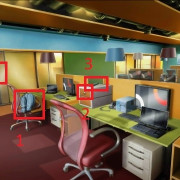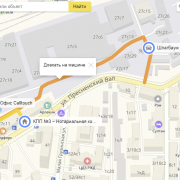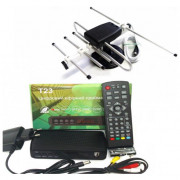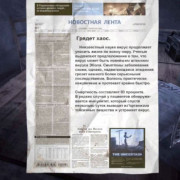Getting started with applied energistics 2
Содержание:
- Applied Energistics 2 API
- Issues
- Setting Up a Pattern
- Channels
- Upgrades
- Unlocking Technology — Hunting For The Last Few Pieces
- Matter Energy Tech: ME Networks and Storage
- Cables
- Stamping out Circuits
- Steve’s First ME Network
- Interfaces
- Issues
- Contribution
- Setting Up Crafting Storage and Co-Processors
- Установка[]
- Materials you will need
- Notification*
- Autocrafting
- Applied Energistics 2 Energy Usage in GT:NH
- Contribution
- On Demand Automation[edit]
- Getting a charge out of quartz
Applied Energistics 2 API
The API for Applied Energistics 2. It is open source to discuss changes, improve documentation, and provide better add-on support in general.
Maven
Our authoritative Maven repository is Github Packages, which you can also use in your builds. Use of Github Packages
to authenticate with your personal access token.
AE2 is also available without authentication from Modmaven. You can use the following snippet as example on how to add a repository to your gradle build file.
When compiling against the AE2 API you can use gradle dependencies, just add
or add the line to your existing dependencies task to your build.gradle.
An example string would be for the API only or for the whole mod.
Builds obtained here or via maven should work in a development environment.
However the dependency might need to be wrapped in like
Issues
Applied Energistics 2 crashing, have a suggestion, found a bug? Create an issue now!
- Make sure your issue has not already been answered or fixed and you are using the latest version. Also think about whether your issue is a valid one before submitting it.
- If it is already possible with vanilla and AE2 itself, the suggestion will be considered invalid.
- Asking for a smaller version, more compact version, or more efficient version of something will also be considered invalid.
- Go to the issues page and click new issue
- If applicable, use on of the provided templates. It will also contain further details about required or useful information to add.
- Click , and wait for feedback!
Providing as many details as possible does help us to find and resolve the issue faster and also you getting a fixed version as fast as possible.
Please note that we might close any issue not matching these requirements.
Setting Up a Pattern
Encoded Patterns hold recipes inside them. Inserting this pattern into an ME Interface will allow one to autocraft that recipe from any terminal of the ME network. To create an Encoded Pattern, a blank pattern and a pattern terminal is needed. Inside the terminal, it will look like Figure 2:

Figure 2: A pattern terminal
It is possible to toggle between creating crafting or processing patterns by clicking on the top right button. The button looks like a crafting table for crafting patterns and a furnace for processing patterns. Blank patterns can be inserted into slot C shown on the diagram. Once a valid pattern is entered, press the button on slot D in the diagram to encode the pattern. Encoded patterns can be overwritten with new recipes (insert it into slot E shown on the diagram and re-encode).
Crafting patterns are for 3×3 shaped crafting recipes. If a valid 3×3 combination of items is set in slot A of the diagram, the corresponding item will automatically show up in the output slot B, which allows you to actually encode the pattern; an empty output is not a valid pattern and cannot be encoded yet. Crafting patterns should be inserted into ME Interfaces that are connected to a Molecular Assembler. Note that any tools used in a shaped crafting recipe will be inserted back into the ME network after the recipe is finished.
Processing patterns are for every other non-shaped crafting recipe, most notably for machines. The left 3×3 grid is set in slot A, which is user configurable and slot B outputs represent the output items for the recipe, which are also user configurable. Just like in crafting patterns, a recipe with an empty output is not a valid pattern. Remember that quantity of items matters here, unlike for a crafting pattern. Processing patterns should be inserted into ME Interfaces that are not connected to a Molecular Assembler.
Channels
Most, but not all, AE2 devices require a channel before it will turn on.

Mousing over a cable shows how many channels are in use
Exceeding the channel capacity of your network will result in the network being shut down until the excess channels are freed up. In general, most things that involve transporting items or permanently holding items (i.e. drives and storage buses) require a channel. Here is a short list of things that require a channel:
- ME Interface
- ME Drive
- ME Import/Export Bus
- ME Ore Dictionary Export Bus
- ME Storage Bus
- ME Chest
- Crafting Storage Multiblock
Here is a short list of things that don’t require a channel:
- Molecular Assembler
- Storage Cells (the things that go into an ME Drive)
- Energy Cell
- Cables
An ME Controller is a device that will provide 32 channels on each of its faces. Without an ME Controller, your ME network will only be able to support up to 8 channels, so it is highly recommended to have a Controller. If more faces/channels are needed, the controller can also be expanded as a multiblock following these rules:
- All ME Controllers in a network must be touching
- The maximum length of one axis of the multiblock is 7 blocks
- An ME Controller can have 2 adjacent blocks in at most 1 axis
Rule #3 essentially means that, of the 3 axes (north/south, east/west, up/down), only one of those axes can have 2 controller blocks on both sides of any given controller and that the other axes may only have one controller after that. One of the implications of this is that you cannot form a «+» shape with your controllers, whereas a «T» shape is fine.
Upgrades
In AE, you upgraded a basic bus to a fuzzy or precision bus when you wanted it to run stacks at a time. In AE2, however, this is handled differently.
There are various Upgrade Cards you can craft and slot into various components. For example, if we wanted to import five specific items, we’d want to put a Capacity Card upgrade into that import bus so it can handle more than one unique item. If we’re wanting to add the capability of using fuzzy logic, then you’d add in a Fuzzy Card. You can put an Acceleration Card into a bus to make it process more things at a time, or into a Molecular Assembler to make it craft faster.
Upgrade Cards aren’t cheap, but they can be used quite effectively.
Unlocking Technology — Hunting For The Last Few Pieces
No, AE2 isn’t broken. The «final» pieces of the AE2 puzzle needed to move up the tech tree into ME Networks are the Inscriber Presses. There are four presses that you need (Listed in order of «tier»):
|
|
|
|
These presses are used to make the Circuits needed for the Tech 2 machines and beyond. They’re found randomly in Sky Stone Chest, which are located within Meteorites. Meteorites are randomly spawned throughout the world, normally underground. So, the hunt begins!
This hunt is a little less aimless than the hunt for your first Charged Certus Quartz Crystal. You’ll have a tool to help you on your way, the Meteorite Compass. The Compass will point you toward the chunk the meteor has generated in, not the specific block or the center of the meteor itself. You’ll have to do some digging and searching in order to find the meteor, and then you’ll have to take it apart and find the center, which is where the Sky Stone Chest will be located.
I did it!
After this is where the fun starts. You now have all the tools to start making the complex pieces that Applied Energistics has to offer! Get out there and start filling up data drives.
Matter Energy Tech: ME Networks and Storage
What is ME Storage?
Its pronounced Emm-Eee, and stands for Matter Energy.
Matter Energy is the main component of Applied Energistics 2, it’s like a mad scientist version of a Multi-Block chest, and it can revolutionize your storage situation. ME is extremely different then other storage systems in Minecraft, and it might take a little out of the box thinking to get used to; but once you get started vast amounts of storage in tiny space, and multiple access terminals are just the tip of the iceberg of what becomes possible.
What do I need to know to get started?
First, ME Stores items inside of other items, called Storage Cells; there are 4 tiers with ever increasing amounts of storage. In order to use a Storage Cell it must be placed inside either an ME Chest, or an ME Drive.
|
|
|
|
The ME Chest shows you the contents of the Cell as soon as its placed inside, and you can add and remove items from it as if it were a Chest, with the exception that the items are actually stored in the Storage cells, and not the ME Chest itself.
While the ME Chest is a great way to get introduced to the concept of ME, to really take advantage you need to set up an ME Network.
How do I setup my first network?
An ME Network is pretty easy to get started you need 2 things, an ME Chest / or ME Drive, and an ME Terminal ( or ME Crafting Terminal ) you’ll also need some kind of cable, such as ME Glass Cable to attach the ME Terminal too.
Place all these next to each other, and you have the world’s simplest network, storage and access.
You can add storage cells to the ME Drive, or use one in a ME Chest for storage, and access it all from the ME Terminal.
You might want to add more ME Terminal to other rooms, for this you’ll want to make some ME Glass Cable, any ME Blocks attached to ME Glass Cable will be connected to the ME Network
Expanding your Network
So you have some basic storage, and access to that storage, its a good start, but you’ll likely be looking to maybe automate some processing.
A great example of this is to place a ME Export Bus on the top of a furnace to dump in ores, and a ME Import Bus on the bottom of the furance to extract furnaced ores.
The ME Export Bus lets you export items from the network, into the attached inventory, while the ME Import Bus imports items from the attached inventory into the network.
Overcoming Limits
At this point you probably getting close to 8 or so devices, once you hit 9 devices you’ll have to start managing channels. Many devices but not all, require a channel to function. If the device deals solely with power, or connectivity like cables the device will not require a channel. Anything that uses items, or moves them around, will.
By default network can support 8 channels, once you break this limit, you’ll have to add an ME Controller to your network. this allows you to expand your network greatly.
Each face of the controller will output 32 channels, depending on whats is accepting these channels will determin how they get used, for instance, if you place a ME Dense Cable next tohe controller you will beable to carry a full 32 channels, however if you place a ME Drive next to it, or non-dense cable, you will only get 8 channels.
Tunneling
So your getting things started, but getting channels where you want them is kinda a nusance. Its time to start using P2P Tunnels. These when configured for ME, allow you to move channels from point to point; this allows you to move up to 32 channels per pair of P2P Tunnel.

| Last modified on 08/20/2014 12:16 PM CDTBy AlgorithmX2 |
Cables
Six main types of cabling exist: quartz fiber, glass cables, covered cables, smart cables, dense cables, and ME Conduits (from Ender IO).

3 dense cables in action. Each colored line that is lit represents 4 channels in use. In smart cables, each line that is lit represents 1 channel.
- Quartz Fiber holds power, but not channels. One of its primary uses is to share power between a network and its subnetworks.
- Glass cables can hold up to 8 channels and power. Covered cables are functionally equivalent to glass cables.
- Smart cables can hold up to 8 channels and power. In addition to this, they will visually show how many of the 8 channels are currently being used. This makes it very useful for debugging issues that will inevitably arise with any moderately complex network.
- Dense cables can hold up to 32 channels and power. Just like smart cables, they visually display how many channels are currently in use. The downside is that they cannot connect directly to most other devices except P2P Tunnels and other cables. This means that one of their main purposes is to carry an entire Controller face’s worth of channels over long distances.
- ME Conduits can hold up to 8 channels and power. They are from the Ender IO mod and cannot be colored the same way as AE2 cables. They also cannot connect to AE2 microblocks (such as terminals and flat-face interfaces).
- Dense ME Conduits can hold up to 32 channels and power. They are the dense version of the Ender IO ME conduits.
Note that glass cables, covered cables, smart cables, and dense cables can all be colored with dye using a shaped crafting recipe. Colored cables will not connect to cables of a different color. The one exception is the default fluix color, which can connect to all other colors. Dyes can also be removed by shaped crafting with a water bucket.
Cable anchors can also be used to prevent same-colored cables from connecting to each other.
Stamping out Circuits
Okay, so now we’ve got the crystals and other materials we need, let’s get crafting!
Oh, before we can, we need to do one teeny tiny little… umm… humongous project. You remember earlier I told you about those dang presses that might take a bit because they are RNG-based chest loot? Umm… yea, you’re going to need all four before proceeding. And we need to build the machines that use them. Namely: the Inscriber.
The four different plates correspond to four different materials they are made of.
- Logic Press + Gold = Printed Logic Circuit
- Calculation Press + Pure Certus Quartz Crystal = Printed Calculation Circuit
- Engineering Press + Diamond = Printed Engineering Circuit
- Silicon Press + Silicon = Printed Silicon
To make a Processor, you take the material circuit on top, the silicon circuit on the bottom, and the redstone in the middle in an Inscriber.
Typically, when automating this process, you have one Inscriber per plate, plus another inscriber for making the processors themselves, for a total of five Inscribers set up. However, you can start off with just one if you are low on resources.
Steve’s First ME Network
Now then, I have some good news, and some bad news. The good news is that you don’t actually need a Controller to start up an ME Network! The bad news is… once you get to the point where you need one, it is going to get very complicated. But for now, hey… not too shabby.
You’re still going to need power it, and for that, you need an Energy Acceptor. For that, however, we get introduced to something new: Quartz Glass. Certus Quartz Dust and Glass in a checker pattern. Combine it with glowstone dust to make Vibrant Quartz Glass which will emit light! But the Power Acceptor itself just needs four Quartz Glass, four iron, and a Fluix Crystal. It’ll accept just about any ol’ kind of power, including Energy Units, Minecraft Joules, Redstone Flux, and Joules from either Mekanism or the identically named Joules from RotaryCraft.
Now that you’ve got that, we’re going to need some storage. For this, I’d strongly recommend an ME Drive. The reason for this is due to the number of channels, which is something we haven’t covered yet. Suffice to say, if you have more than eight channels, you need an ME Controller. And, unfortunately, each ME Chest is going to be its own independent channel, which pretty much makes ME Chests even less useful than they were previously. I wasn’t a fan of ME Chests before, but this pretty much makes them impossible to use for any practical purposes.
For this, we need some ME Cable, which means now we get to be introduced to Quartz Fiber. Three quartz glass in a row makes four quartz fiber. And yes, ME Cable is now significantly more expensive than it used to be. Quartz Fiber by itself can also be used to break up networks to avoid overloading channels, but still share energy. We’ll get into that when we start talking about channels, but for now, just know that it can be useful for things other than ME Cable.
The ME Drive takes up one channel. This will be important later. It is used to store the storage cells, but by itself doesn’t really do much. So now we need some storage. Generally, I suggest 4k storage cells. It can only store 63 items, just like any other storage cell, but it lets you store more stacks of the same items. But if you just want to make some basic 1k cells, that’s certainly a viable option, at least early on.
You start off making storage cells by making Storage Components, the most basic storage part there is. Four certus quartz and four redstone around a gold processor. Now, to make a 4k disk, you need a Storage Segment, which is three of these, and a Pure Certus Quartz processor, plus some more redstone around a quartz glass.
Okay, so now we’ve got some storage and the drive to put the disks in. Now we need to access it, which brings us to another significant change, and one which I am really in favor of: the ME Terminal. This isn’t a block anymore, it’s a multipart facade that goes on cable. More importantly, you can use a View Cell to filter what each individual ME Terminal accesses. And yes, you can upgrade them to ME Crafting Terminals. Do keep in mind that every Terminal also requires a Channel.
Interfaces
A sample ME Interface UI is shown on Figure 1:

A simple subnetwork. On the left is Network A’s storage bus and on the right is Network B’s interface. Network A can see all the storage cell contents of Network B. Notice that Network A is sharing power with Network B via quartz fibre on the top.
ME Interfaces serve a number of purposes. Firstly, they can act as a glorified import and export bus. Inserting items directly into an interface will insert the item into the ME network. Inserting items into slot B shown on Figure 1 will also insert items into the network. Placing an item(s) into one of the 8 slots of slot A in Figure 1 will force it to export that many item(s) into slot B. Something will need to pull the item out of the interface after, since it does not auto-output like an export bus.
As previously mentioned, interfaces also expose the contents of its network to any storage bus that connects to it.
Interfaces also allow for autocrafting. The bottommost row of 9 slots (slot C in Figure 1) can hold crafting/processing patterns (will be explained shortly). The top right slot (slot D in Figure 1) can hold upgrade cards.
Interfaces can be shape-crafted to be in panel-mode or block-mode. Functionally, there is no difference between the two modes. Panel-mode interfaces can seamlessly exist within AE2 facades and can attach to any 6 sides of a cable or a block, whereas block-mode interfaces will take up the whole block space.
Issues
Applied Energistics 2 crashing, have a suggestion, found a bug? Create an issue now!
- Make sure your issue has not already been answered or fixed and you are using the latest version. Also think about whether your issue is a valid one before submitting it.
- Go to the issues page and click new issue
- Enter your a title of your issue (something that summarizes your issue), and then create a detailed description of the issue.
- Do not tag it with something like or . When it is applicable, we will take care of it.
- The following details are required. Not including them can cause the issue to be closed.
- Forge version
- AE2 version
- Other mods and their version, when reporting an issue between AE and another mod
- A detailed description of the bug or feature
- To further help in resolving your issues please try to include the follow if applicable:
- What was expected?
- How to reproduce the problem?
- Server or Single Player?
- Screen shots or Pictures of the problem
- Mod Pack using and version?
- Keep in mind that some mods might use an outdated version of AE2
- If so you should report it to your modpack
- Click , and wait for feedback!
Providing as many details as possible does help us to find and resolve the issue faster and also you getting a fixed version as fast as possible.
Contribution
Before you want to add major changes, you might want to discuss them with us first, before wasting your time.
If you are still willing to contribute to this project, you can contribute via Pull-Request.
The guidelines for contributing contain more detailed information about topics like the used code style and should also be considered.
Here are a few things to keep in mind that will help get your PR approved.
- A PR should be focused on content. Any PRs where the changes are only syntax will be rejected.
- Use the file you are editing as a style guide.
Getting Started
- Fork this repository
- Clone the fork via
- SSH or
- HTTPS
- Change code base
- Add changes to git
- Commit changes to your clone
- Push to your fork
- Create a Pull-Request on GitHub
- Wait for review
- Squash commits for cleaner history
If you are only doing single file pull requests, GitHub supports using a quick way without the need of cloning your fork. Also read up about synching if you plan to contribute on regular basis.
Setting Up Crafting Storage and Co-Processors
Crafting storage is required alongside patterns. Crafting storage blocks come in 1K, 4K, 16K, and 64K byte variants (similar to storage cells). Crafting storage is essentially a buffer where items are held until the recipe is finished. Because of this, the longer a recipe is (let’s say you have 5 or more «chained» recipes for a single recipe) the more storage you will need to start that job.
Crafting Storage can be expanded in a multiblock structure. The only rules are that it must be cuboid and it must have at least 1 crafting storage block. The entire multiblock will only use 1 channel.
Co-Processors allow for recipes to be executed simultaneously amongst many interfaces. For example, if you had 4 encoded patterns for a 1x tin cable and each of those were inserted into 4 separate interfaces, having 3 Co-Processors would allow your ME network to leverage all 4 interfaces as part of the crafting recipe (this means it could use 4 assemblers simultaneously). By default, 0 co-processors in a network means that it can only do 1 interface’s worth of that recipe at a time. Co-Processors can be part of the crafting storage multiblock.
Установка[]
Основная статья: Установка модификаций с помощью Forge
- Установите Minecraft Forge.
- Скопируйте файл в папку .
Руды
| Изображение | Название | Описание |
|---|---|---|
| Кварцевая руда | Встречается на высоте от 16 до 72 блоков. Базовый элемент для создания всех предметов и блоков этой модификации. При разрушении выпадает 1-2 кварцевых кристалла и 0-1 кварцевой пыли. |
Материалы
| Изображение | Название | Описание |
|---|---|---|
| Кварцевый кристалл | Базовый предмет, необходимый для изготовления конвертирующих матриц и компонентов молекулярного сборщика. В некоторых крафтах взаимозаменяем с кварцем Нижнего мира. | |
| Кварцевая пыль | Используется для создания кремния, а также при крафте аметистовой пыли. В некоторых крафтах взаимозаменяем с пылью кварца Нижнего мира. | |
| Пыль кварца Нижнего мира | Используется для создания аметистовой пыли. В некоторых крафтах взаимозаменяем с кварцевой пылью. Используется для создания кремния. | |
| Аметистовая пыль | Основной компонент для создания МЭ кабеля. Используется при создании конвертирующих матриц. | |
| Аметистовый кристалл | Компонент для создания МЭ контроллера. | |
| Аметистовая жемчужина | Основной элемент при создании предметов беспроводной МЭ сети. | |
| Кремний | Используется при крафте процессоров. | |
| Конвертирующая матрица | Важный предмет, используемый в крафте машин, в которых происходит превращение предметов в энергию и наоборот. | |
| Энергетическая ячейка | Промежуточный компонент для создания предметов, потребляющих энергию. | |
| Беспроводной приёмник | Основной элемент при создании предметов беспроводной МЭ сети. |
Процессоры
| Изображение | Название | Описание |
|---|---|---|
| Механизм базового процессора | При переплавке образует МЭ базовый процессор. | |
| МЭ базовый процессор | Используется в крафте базовых механизмов и хранилищ. | |
| Механизм улучшенного процессора | При переплавке образует МЭ улучшенный процессор. | |
| МЭ улучшенный процессор | Используется в крафте более сложных механизмов и хранилищ. |
Инструменты
| Изображение | Название | Описание |
|---|---|---|
| Кварцевая кирка | Полностью идентичны своим железным аналогам. | |
| Кварцевая лопата | ||
| Кварцевый топор | ||
| Кварцевая мотыга | ||
| Кварцевый меч | ||
| Кварцевый нож | Служит для создания механизмов процессоров. | |
| Кварцевый ключ | Служит для поворота шин, настройки приоритетов хранения и демонтажа механизмов. Взаимозаменяем с ключами из BuildCraft, Thermal Expansion и OmniTools. | |
| Катализатор вибрации | Раскаляет блоки: превращает лёд в воду, булыжник в камень, песок в стекло, при использовании на руде выпадает сразу переплавленная руда. Использует энергию. | |
| Ускоритель энтропии | Охлаждает блоки: превращает лаву в обсидиан; камень в булыжник; воду в лёд. Использует энергию. | |
| Материальная пушка | Дальнобойное оружие. Стреляет шариками материи или самородками (в том числе и из других модификаций). | |
| Ручной дробитель | Аналогичен дробителю из IndustrialCraft 2, но не использует энергию. Вместо этого вы должны крутить рукоятку. Необходимое количество оборотов зависит от типа руды. Очень рекомендована на начальных этапах игры. |
Прочее
| Изображение | Название | Описание |
|---|---|---|
| Кварцевый блок | Декоративный блок. | |
| Железная пыль | Получается путём дробления железной руды в ручном дробителе. Совместима с другими модификациями. | |
| Золотая пыль | Получается путём дробления золотой руды в ручном дробителе. Совместима с другими модификациями. | |
| Мука | Получается путём дробления пшеницы в ручном дробителе. Совместима с другими модификациями. | |
| Маленький динамит | Уменьшенная версия стандартного динамита. |
Materials you will need
Like before, this mod is very iron hungry, redstone hungry, very gold and diamond hungry, and introduces Certus Quartz. You’re also going to need power to run your system on.
New in this edition, however, you’re going to need four different Press Plates. These are ONLY found in Sky Stone Chests which are only found in the middle of meteors. If you can’t find a meteor on the surface, you may need to dig around a bit to find one. There’s also a compass you can use to find them, however it means you have to remove every last piece of Skystone from a meteor, or the compass will just point back to it. Joy. And there’s four different plates, but only two of them are found per chest. And no guarantees the next chest has anything unique. Skystone currently has only one use: the ME Controller.
Now, if you are on a multiplayer server, once all four have been located, you can copy them easy enough. But if you are playing single player, finding them all can be a royal pain.
Notification*
It is important to realize that Applied Energistics 2 (AE2) is a very different mod in the universe of Sky Factory 4 than it is in an isolated modded environment. The main reason for this is because the mod pack has disabled channels and removed a block called the ME Controller as it would be essentially useless in the absence of channels. The pack has also removed a number of other key elements of the mod such as a resource called Certus Quartz and a block called sky stone. Sky Factory 4 has instead altered crafting recipes accordingly so that these resources are not needed to progress. As a result, many aspects of the mod have limited usefulness and many of the tutorials or documentation on AE2 that are not made specifically for Sky Factory 4 will not be as useful. This guide will focus on the elements of AE2 which maintain functionality in the universe of Sky Factory 4.
Autocrafting
When a valid pattern is inserted into an ME Interface, the recipe will be auto-craftable from a terminal. Once the autocraft for that recipe is initiated, all «input» items will be dumped into whatever inventory the pattern-holding interface is connected to.
The key thing to know is that, for processing patterns, the ME network will simply dump all the «input» items of the encoded pattern into the interface’s attached inventory and will expect the «output» item to be inserted into the network at some later point in time. If there isn’t enough space to dump items into, the ME network will wait until space frees up; it will not send parts of a recipe, it will send it all at once. The output item doesn’t have to be inserted into the same ME Interface that started the recipe; it can inserted from anywhere in the network, through any means (import buses work too), and it will satisfy the recipe. With this in mind, autocrafting in AE2 is actually very simple. The ME network has no idea what kind of inventory you are dumping the input items to, it simply dumps items and expects the pattern-specified output(s) back into the system. If it doesn’t ever get the expected output(s) back, the ME network will not allow you start another autocrafting recipe, so make sure that you have set the recipe properly. Recipes can also be cancelled at any point.
Let’s theorycraft an example. Let’s say you want to autocraft 1x tin cables. We need a processing pattern with: 1 1x tin wire and 1 rubber sheet. This can’t be dumped directly into an assembler because the rubber sheet has to be fluid extracted, so we will instead connect the interface to a chest. This will make the ME network dump a 1x tin wire and 1 rubber sheet into the chest whenever you request a tin cable from a terminal. From the chest, you can have a filtered Ender IO item conduit take all rubber sheets and insert them into a fluid extractor while taking all non-rubber items and inserting it into an assembler. The output of the assembler (a 1x tin cable) can then be inserted back into the ME network and the recipe will be considered «complete» by the ME network.
Note that you would probably also need to set up autocrafting for the 1x tin wires as well: 1 tin ingot->2 1x tin wires. This recipe could be hooked up directly to a Gregtech wiremill. But note if you do this, you will literally have a limit of 4×9 wiremill recipes. This is because interfaces can only hold 9 recipes each and only 4 of the 6 faces of a Gregtech machine can have an interface attached to it: one is a non-insertible «face» of the machine and the other would be used for EU input. To get around this, we can do what we did before and instead connect the interface to a chest. The chest can then have items transported from it to the machine. You will notice that doing it this way is also easily expandable since we can easily just add more chests/interfaces. As long as the ME network receives 2 1x tin wires after dumping a tin ingot into the chest, any setup is valid.

An interface connected to a chest allows for potentially infinite numbers of interfaces for a single machine.
Applied Energistics 2 Energy Usage in GT:NH
Nearly everything in AE2 requires power to run. Insert/extracting items from the system also consumes some energy. ME systems, by default, use an energy type of AE. Below are estimated quantities of AE/t required per device/storage unit when idle.
Contribution
Before you want to add major changes, you might want to discuss them with us first, before wasting your time.
If you are still willing to contribute to this project, you can contribute via Pull-Request.
The guidelines for contributing contain more detailed information about topics like the used code style and should also be considered.
Here are a few things to keep in mind that will help get your PR approved.
- A PR should be focused on content. Any PRs where the changes are only syntax will be rejected.
- Use the file you are editing as a style guide.
Getting Started
- Fork this repository
- Clone the fork via
- SSH or
- HTTPS
- Change code base
- Run to apply automatic code formatting
- Add changes to git
- Commit changes to your clone
- Push to your fork
- Create a Pull-Request on GitHub
- Wait for review
- Squash commits for cleaner history
If you are only doing single file pull requests, GitHub supports using a quick way without the need of cloning your fork. Also read up about synching if you plan to contribute on regular basis.
On Demand Automation[edit]
Orchestrated by the ME Molecular Assembler Chamber, an expansible multi-block structure that is the central processing unit of ME automation. Crafting information is stored by encoding ME Blank Patterns with recipes using an ME Pattern Encoder. The resulting ME Encoded Pattern is then stored in the Assembler Chamber which makes these items become available to the Player on demand via the ME Access Terminal provided all the required items are available in the system or are encoded. This automation is easily extended to machine processing and managed by ME Interfaces, ME Import and Export Bus connected by ME Cable and Itemduct. This allows to pulverize, Smelt, and even Transpose Liquids needed to craft anything the Player orders.
Applied Energistics also adds a new Ore to world generation, the Certus Quartz, a main resource used in the crafting of ME Tools and components. When the ore is mined, there is also a chance of Certus Quartz Dust being dropped. If more Quartz Dust is needed, it can also be produced by grinding up the Quartz Crystal in Player’s available grinding machine.
Getting a charge out of quartz
Before we can actually make anything in this mod, we’re going to need Fluix Crystal, which you might remember. However, the method you use to get it is very different. Now you need to make a little pool of water, then drop a Nether Quartz, a Charged Certus Quartz Crystal, and a Redstone into it.
Wait… a charged what now?
Yeah, the old Certus Quartz you used to know and love now comes in two varieties: normal and charged. The charged stuff is way rarer, and it is the only one you can use to make Fluix with. Which means you’re going to need to get lucky and find it.
Now, there is a way to charge certus quartz, you use the Charger. However, it requires two Fluix Crystals to make, so you’ll need to find at least a little bit of charged certus quartz as worldgen. Now, the Charger can accept power from your ME Network, from any power supply, or from a hand-crank if you are really desperate.
There’s also a way to extend your quartz: make it Pure. I’ll warn you right now, this is going to be a royal pain for you early-game, because it takes for-flipping-ever to do. Basically, you put a certus quartz dust combined with a sand to make a pair of certus quartz seeds. Then you put the seed in water and wait. And keep waiting. Then wait some more. Careful, don’t let it despawn! Then wait some more. For several hours. Now, there’s a way to speed things up a lot, called a Crystal growth Accelerator, however it’s expensive both in terms of material cost and most particularly in energy drain. You will want to be able to turn them off when not in use.






